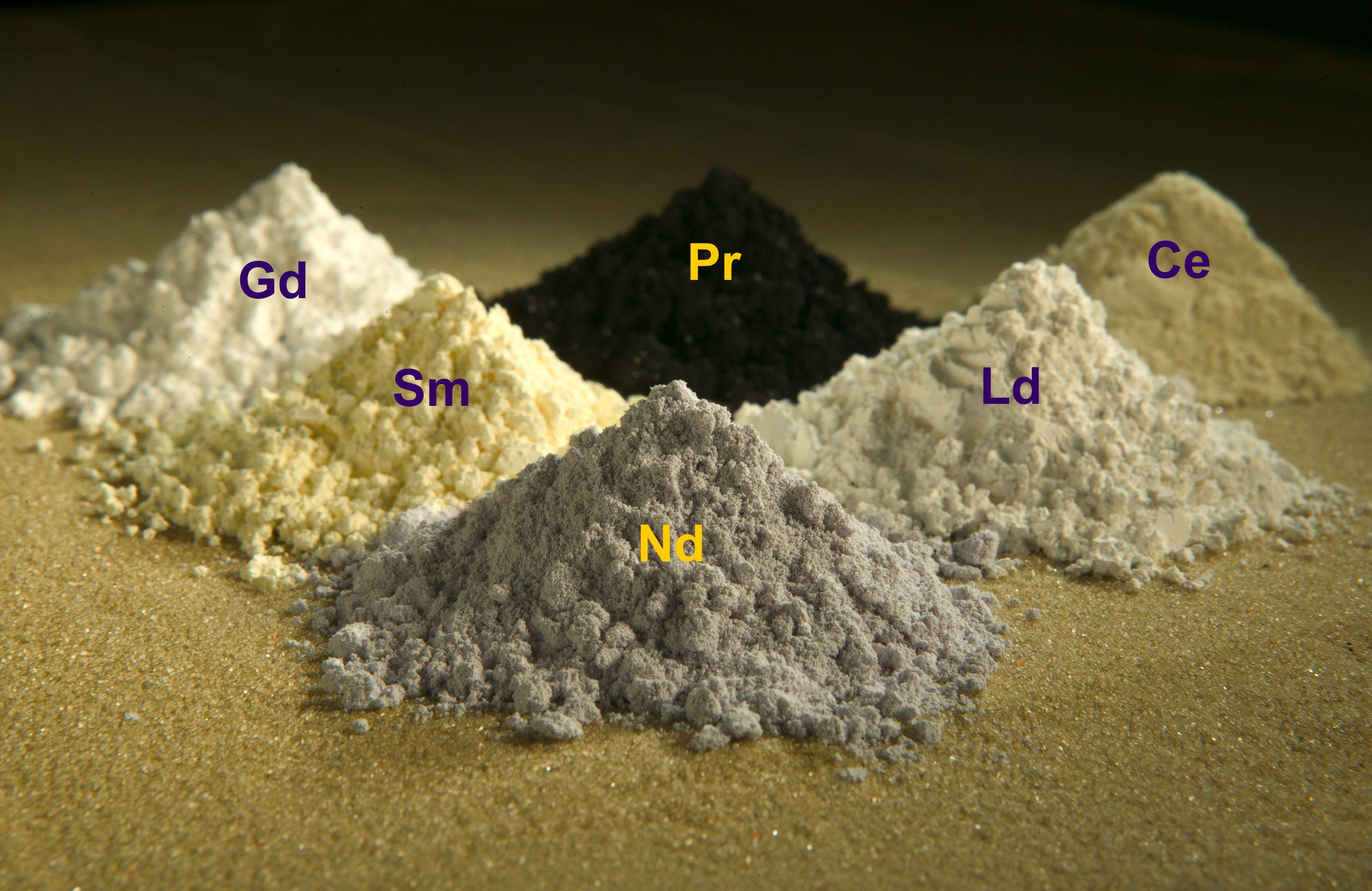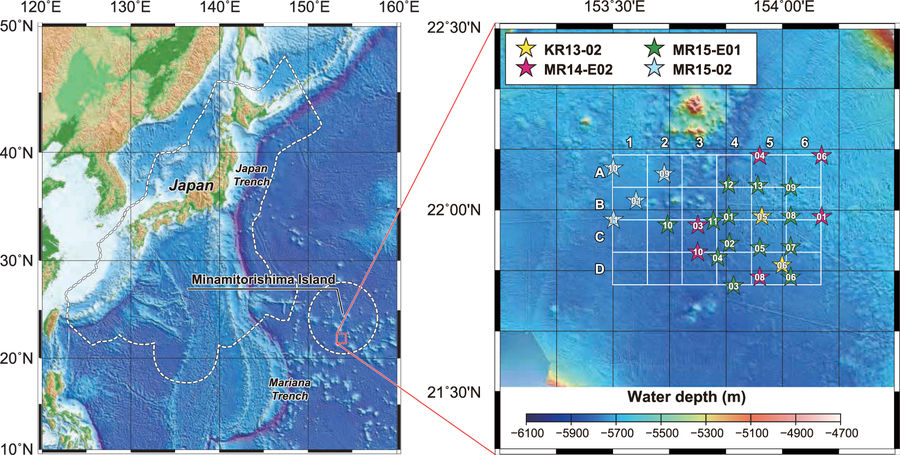
Japanese researchers have discovered centuries worth of rare-earth elements within Japan’s economic exclusive zone off the Ogasawara Island chain 2,000 kilometers southwest of Tokyo.
“Rare-earth elements and yttrium (REY) are critical in renewable energy technologies and electronics, for example, hybrid vehicles, rechargeable batteries, wind turbines, light-emitting diodes, defense technologies, as well as medical technologies,” said Yutaro Takaya, associate professor at Waseda University and leading author of this study. “Our findings may change the nation’s policies and strategies on natural resource management, for we could possibly become self-reliant in terms of rare-earth mineral resource and build a sustainable future.”
Its abundance, paucity for radioactive elements, and easy extraction and recovery have made REY-rich mud a promising rare-earth metal resource, and back in 2013, marine sediments high in REY content were found near Minami-Tori-shima, approximately 1,800 km southeast of Tokyo. Since then, Japanese industries, academic institutions, and the government have collaborated to investigate development possibilities and evaluate its economic value.
The deposits, estimated at 16 million tons, lie at a depth of 5,700 meters about 250 km south of Minami-Torishima Island in the Pacific Ocean. “Japan now has the potential to supply these materials on a semi-infinite basis to the world,” the study said.
The discovery was announced by a team that involved Waseda University, the University of Tokyo and the Japan Agency for Marine-Earth Science and Technology (JAMSTEC).
Researchers said it was reasonable to expect that technology could be developed in the near future to extract the deposits in viable quantities. According to the research report, the 16 million tonnes of materials could contain 780 years’ worth of yttrium, 620 years’ worth of europium, 420 years’ worth of terbium and 730 years’ worth of dysprosium.
The team discovered traces of seabed deposits with a high concentration of rare earth elements in the area in 2013.
A rare-earth element is one of a set of seventeen chemical elements in the periodic table, specifically the fifteen lanthanides, as well as scandium and yttrium.
The findings were published in the online edition of the British magazine Scientific Reports on April 10.
China’s monopoly over REE
In a little-noticed speech in 1992, Deng Xiaoping, the paramount leader of the PRC, signaled China’s intention to corner the rare earth market. “The Middle East has oil. China has rare earths,” he had said.
Thanks to the 863 Plan (also known as State High-Tech Development Plan), China placed special emphasis on rare earths research and the development of rare-earths-related end products. Between 1978 and 1989, China consistently increased its production output for rare earths, and provided large amounts of RE materials to the world market at low prices.
In 2009, approximately 125,000 tons of rare earth oxides were supplied to global industries, according to Roskill Information Services, a London-based metals and minerals research firm. Of that quantity, China supplied 120,000 tons, while Russia provided 2,500 tons, the U.S. supplied 2,400 tons, and India provided 25 tons.
In 2017, China produced 81 percent of the world’s rare-earth supply, mostly in Inner Mongolia, although it had only 36.7 percent of reserves. All of the world’s heavy rare earths come from Chinese rare-earth sources such as Bayan Obo deposit in Inner Mongolia.
Senkaku boat collision incident
In September, 2010, China and Japan were locked in a bitter diplomatic standoff. On the morning of September 7, Chinese trawler, Minjinyu 5179, operating in disputed waters collided with Japanese Coast Guard’s patrol boats near the Senkaku Islands setting off a small-scale diplomatic crisis.
The Japanese coast guard detained Zhan Qixiong, the captain of the trawler and his crew. China responded by canceling all Sino-Japanese meetings of a ministerial level and above. The diplomatic spat ended when the Japanese authorities returned captain Zhan to China. This was considered a diplomatic victory for the Chinese. However, the key factor leading to the eventual diplomatic defeat of Japan was China’s “embargo” of rare earths exports to Japan, according to a research paper published by Center for Strategic and International Studies.
“This use of economic leverage to influence policy raised concerns about the impact of China’s strategic hold on these precious metals. REEs have long been considered the “enhancers” of global products and are used to manufacture defense and commercial high-technology items. Their availability today, however, could be jeopardized since China controls over 97 percent of their production and refinement,” the paper further stated.
Beijing’s dominance over rare earth elements has raised concerns within the industry regarding prices for critical defense hardware. China has been reducing the export quota of REE since 2009 to conserve scarce resources and protect the environment. Beijing has made it clear that in the future it will “further reduce quotas for rare earth exports by 30 percent to protect the precious metals from over-exploitation.”
With this new discovery, Japan is all set to challenge the Chinese dominance over rare earth elements. However, the process is going to take some time.










